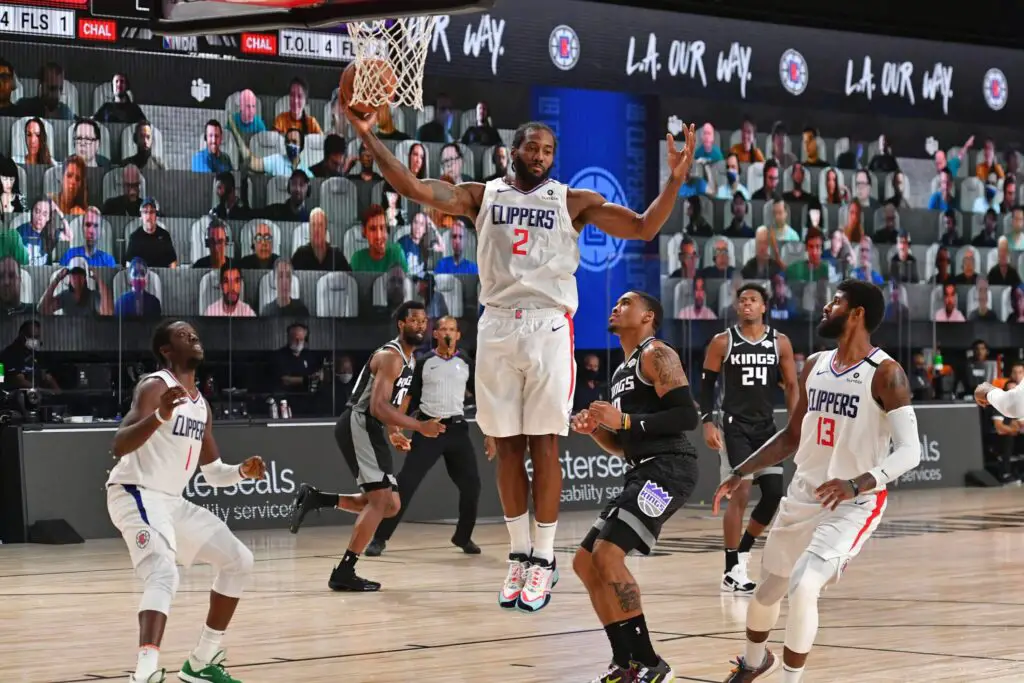In basketball, TOL stands for “Timeouts Left.” It refers to the number of timeouts a team has remaining in a game.
Basketball, one of the world’s most popular and fast-paced sports, demands strategic gameplay and quick decision-making. Coaches and players use timeouts to strategize, rest, or halt the opposing team’s momentum. Knowing the number of timeouts left (TOL) is crucial for managing the game’s flow and making tactical decisions.
Teams must keep track of their TOL to ensure they have the strategic advantage when the game’s intensity peaks, especially during the final minutes. Keeping a close eye on this aspect can be the difference between a win or a loss in situations where every second counts.

Introduction To Tol In Basketball
An Introduction to TOL in basketball reveals a crucial aspect of a high-energy game that hinges on strategy and timing. TOL stands for timeout, a powerful tool in basketball used to sway the game’s momentum, make strategic decisions, and give players a breather.
Defining Tol: Timeouts In Basketball
Defining TOL, or timeouts, is essential to understanding their impact on a basketball game. A timeout is a break in the action, requested by a coach or player, to strategize or rest. Each game includes a limited number of timeouts, making their use a key strategic decision.
- Full Timeouts: Usually lasting about 1 minute.
- 20-Second Timeouts: Shorter timeouts for quick discussions.
The Importance Of Tol In Game Management
Timeouts, or TOLs, are vital in managing a basketball game. They allow teams to alter strategies, adapt to opponents’ playstyles, and regain focus. TOL usage often changes the game’s outcome, rewarding teams that deploy them wisely.
| Strategic Uses of TOL | Benefits |
|---|---|
| Stopping Opponent’s Momentum | Allows team to regroup |
| Planning Specific Plays | Increase scoring chances |
| Resting Key Players | Preserve energy for crucial moments |
Strategic Use Of Tol In Basketball Games
In basketball, the term “TOL” stands for “Timeouts Left.” Coaches have a set number of timeouts they can call during a game. Using TOL effectively is a game-changer. It’s not just about stopping the clock. It’s about strategy, control, and momentum. Here’s how seasoned coaches deploy TOLs to their advantage.
Halting Momentum Of The Opponent
Basketball is a game of runs and momentum shifts. When the opposing team is on a scoring streak, calling a TOL can break their rhythm. It gives the team a chance to regroup and refocus. Teams often come back with a stronger defense post-TOL.
Setting Up Key Plays
In the dying moments of the game, each point can decide the winner. A wisely called TOL allows the coach to set up a crucial play. The team can organize and execute a play they’ve perfected in practice, increasing their chances to score.
Resting Key Players And Managing Fatigue
Intense games can tire even the most elite athletes. TOLs offer a brief rest for players without substitutions. This strategy can be key in keeping star players fresh for the final stretch of the game.
Making Tactical Adjustments During The Game
Games can be unpredictable, and sometimes the initial strategy needs tweaking. A TOL gives coaches the chance to make tactical changes in real time. This can mean switching defensive schemes or creating mismatches on offense.
Case Studies: Masterful Tol Decisions In Basketball History
The term ‘TOL’ in basketball stands for ‘timeout left’. It shows how many timeouts a team can still call during a game. Teams use timeouts to plan, rest, and sometimes change the game’s flow. Masterful TOL decisions by coaches have often led to historic wins and unforgettable moments in basketball history. Let’s dive into some extraordinary case studies.
Famous Game-changing Timeouts
Great coaches know just when to call a timeout. These pauses allow teams to regain focus and interrupt the momentum of opponents. Strategical TOLs have turned games around, snatching victory from the jaws of defeat. Let’s explore a few standout timeouts that changed the course of games.
- “The Timeout That Saved the Game”: A timeout called with seconds left on the clock leads to a winning play.
- “Regroup and Conquer”: A full timeout gives a struggling team the break they need to come back and win.
- “The Momentum Breaker”: A well-timed timeout cools down the opposing team’s hot streak.
Analyzing Coaching Strategies: Top Tol-related Coaching Decisions
Analyzing coaching strategies reveals the power of TOL. Insightful coaches use timeouts not just to rest their players, but also to strategize. Here, we dissect some top TOL-related coaching decisions in basketball history.
- The Tactical Adjustment: Changing defensive formations during a timeout to surprise the opponent.
- The Mental Reset: Using timeouts to boost morale and focus during critical game moments.
- The Perfect Play: Drawing up a game-winning shot or play during a final timeout.
The Impact Of Tol On Game Outcomes
TOL not only affects the current play but can also impact the entire game outcome. Key timeouts contribute to successful comebacks, disrupted rhythm in the opposing team, and dramatic last-second shots. Below are some ways TOLs have made a decisive impact on game outcomes.
| Game Impact | Examples |
|---|---|
| Shift in Momentum | A timeout helped a team break the opponent’s scoring run and start their own. |
| Closing Out Games | Timeouts used in the final minutes to maintain the lead and secure a win. |
| Strategic Substitutions | Timing timeouts for key player substitutions that can alter the game’s flow. |
Successful TOL usage requires sharp awareness, precise timing, and sometimes, a bit of luck. But, it is clear that when wielded correctly, TOL is a powerful tool in basketball.
Best Practices For Coaches
Welcome to our latest discussion on the best practices for basketball coaches. ‘Timeouts’ (TOL) form a critical part of game strategy. Understanding the subtleties of when and how to use them can affect the game’s outcome. Let’s dive into the essentials every coach should master.
Knowing When To Call A Timeout
The right moment for a TOL is crucial. Coaches must identify when their team needs a breather or when momentum shifts. Key points include:
- Stopping the opponent’s momentum
- Setting up a crucial play
- Resting key players
- Preventing violations like a five-second inbound call
How To Plan For Tol Situations
Preparation is key. Coaches should:
- Keep track of TOLs available.
- Design specific plays for post-timeout scenarios.
- Adapt strategies based on the game’s flow.
- Ensure all team members understand their roles during a timeout.
Training Players For Post-timeout Execution
Effective post-timeout execution can change the game. Coaches must:
| Training Focus | Reason |
|---|---|
| Play memorization | Players should recall plays instantly. |
| Pressure handling | Maintaining composure is essential. |
| Clear communication | Players must understand the plan. |
| Role clarity | Each player should know their task. |
Conclusion And Future Perspectives
Basketball continues to evolve with time. Timeouts (TOL) are transforming. They are vital for game strategy and outcomes. This section explores TOL’s future role, technology in analytics, and insights for new coaches.
The Evolving Role Of Tol In Modern Basketball
The function of timeouts has expanded beyond regrouping or halting opponent momentum. Today, they offer strategic advantages. Teams use TOL for in-depth analysis and orchestration of precise plays. This trend will likely continue, redefining basketball’s tactical aspects.
Technological Advances And Tol Analytics
Technology’s reach in sports analysis is growing. With real-time data, teams can analyze play patterns during TOLs. Gadgets and software provide instant statistics and player conditions. This allows for more informed decisions on the court.
Theoretical Insights For Up And Coming Coaches
New coaches must grasp TOL’s strategic use. Studying game footage and trends is essential. A strong theoretical understanding helps predict opponent moves. It also helps in crafting winning strategies during game-time TOLs.

Frequently Asked Questions For What Does Tol Mean In Basketball
What Is The Meaning Of Tol In Football?
The term “TOL” in football stands for “Turnover on Downs,” indicating a team has failed to achieve a first down, resulting in possession going to the opposing team.
What Does Tol Stand For In Basketball?
TOL in basketball stands for “Timeouts Left”. It indicates the number of timeouts that a team has remaining during a game. Teams use timeouts to strategize and rest.
How Many Tols Do Teams Get In A Game?
In the NBA, teams are allowed seven timeouts per game. However, they can only carry over up to four timeouts into the last quarter, reflecting the timeouts left (TOL).
Can Tols Carry Over To Overtime?
No, TOLs do not carry over to overtime. In the NBA, each team is granted two timeouts per overtime period, regardless of TOLs remaining from regulation time.
Conclusion
Understanding ‘TOL’ is crucial for any basketball enthusiast or player. It’s a strategic element that impacts the game’s flow and outcome. By grasping the concept of timeouts left, fans can enhance their viewing experience, and players can make informed decisions on the court.
Remember, a wisely used TOL could be the difference between victory and defeat. Keep counting those timeouts!


